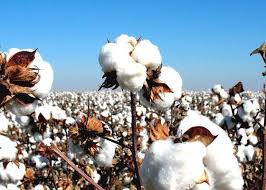
The Authentic Egyptian Cotton
Share
“Authentic Egyptian cotton comes only from Egypt. You might think that’s incredibly obvious, but there is a surprisingly common myth that cotton grown outside of Egypt can still be called Egyptian cotton. This is simply not true.”
The Name:
The word "Cotton" has Arabic origins, derived from the Arabic word (qutn or qutun). This was the usual word for cotton in medieval Arabic. The word entered the Romance languages in the mid-12th century, and English a century later. Cotton fabric was known to the ancient Romans as an import, but cotton was rare in the Romance-speaking lands until imports from the Arabic-speaking lands in the later medieval era at transformatively lower prices.

Modern researchers analyzed the genomes of a cross-section of cotton seed samples from archaeological sites about 1,600 years old from Egypt, and the sample was identified as Gossypium herbaceum, native to Africa.
The History:

The Beginning. The cotton plant was recorded from Egypt in the Dynastic period as early as 2500 BC. Cotton seeds were recovered from Nubia (Egypt) in 1964. Many writers and relief sculptures, as well as hieroglyphic symbols, confirm cotton cultivation during this period. Cotton cultivation dominated in the Ptolemaic and Roman period (305 BC-AD 395).

The Golden era, it was under Muhammad Ali of Egypt in the early 19th century, that steam engines were introduced to the Egyptian cotton industry. The industry was initially driven by machinery that relied on traditional energy sources, such as animal power, water wheels, and windmills, which were also the principal energy sources in Western Europe up until around 1870.
A Frenchman named Louis Alexis Jumel had come across a neglected cotton plant in a Cairo garden. He marveled at how well the plant took to the climate, how its long fibers spun easily into soft yarn. He became convinced that large-scale cultivation was possible and persuaded Muhammad Ali Pasha, Egypt’s monarch, of his idea. Grown along the Nile, cotton thrived in Egypt, and Ali steadily turned the country into a cotton plantation. Between 1860 and 1865, Egypt’s farmers increased their cotton production from fifty million pounds to two hundred and fifty million pounds.
And Egypt in the early 19th century became the fifth most productive cotton industry in the world, in terms of the number of spindles per capita.

Present era, since 1952 till now, the production of Egyptian cotton has fallen by seventy per cent. A U.S.D.A. report from March 2016 blamed “the floundering and ever-changing government’s policies, and the deteriorating seed quality”.
